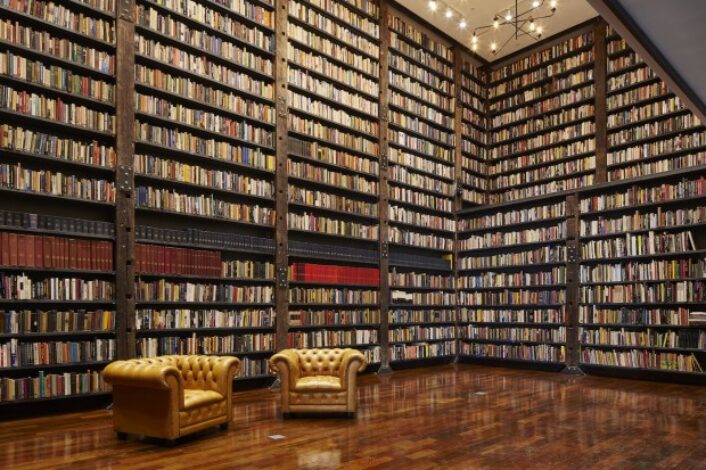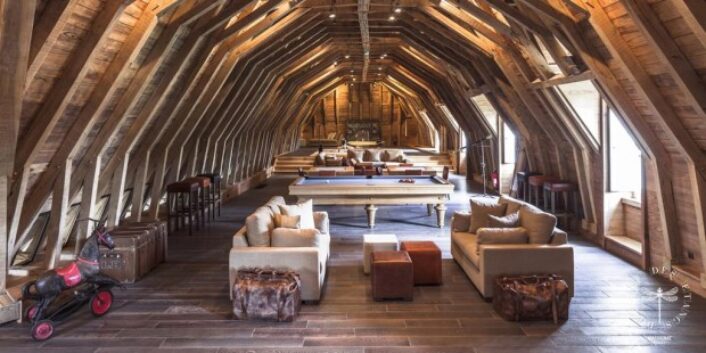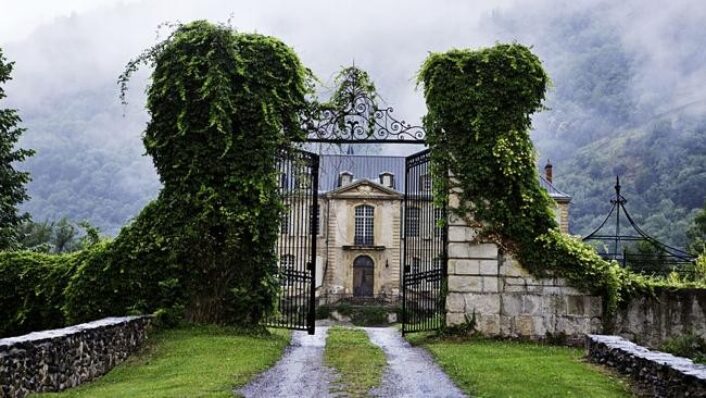A tour of Vitali’s home.
Architecture
Making a 14th-century church your home!
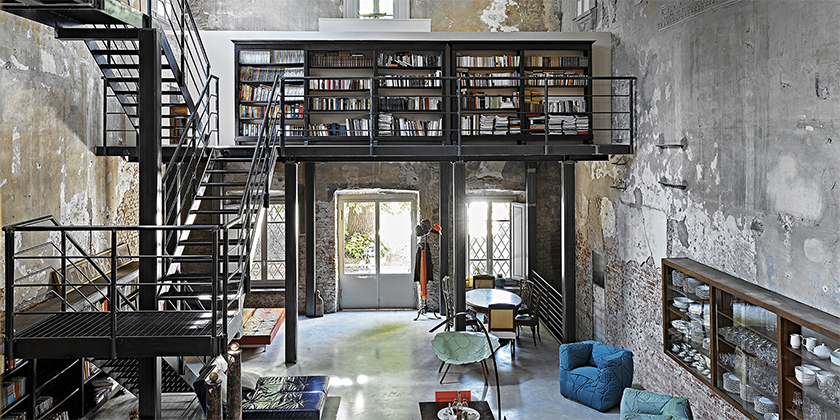
The building’s size is huge, 30 feet x 60 feet.
Image courtesy of: 1st Dibs, photographed by: Michele Biancucci
As a celebrated Italian photographer, Massimo Vitali has seen many beautiful locations. Thus, when it came time to choose a place in which to lay his head, he knew exactly what he wanted it to look like.
The acclaimed photographer had been eyeing a deconsecrated 14th-century church for quite some time. Even though the 650-year-old building had a long and complicated history, he was set on making it his home!
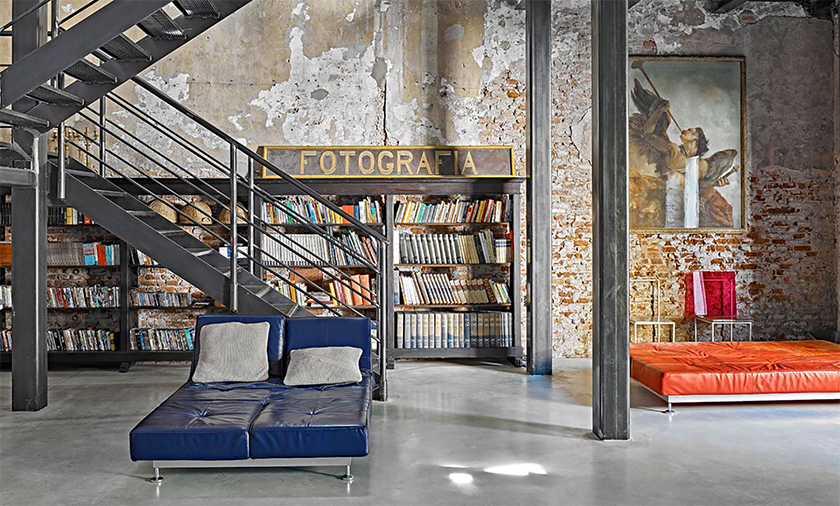
This appropriate antique Fotografia sign was found in a church’s garden and the bookshelves are from the 19th-century. These were used in Lucca, the same location as the church.
Image courtesy of: 1st Dibs, photographed by: Michele Biancucci
The building sat vacant for seventeen years and prior, had several incarnations. For a while, the building was a gym for a fascist youth group and then it was a plumbing supply warehouse. More recently, an aspiring hotelier bought the building, hoping to turn it into a hotel. But the project failed because the owner did not know what to do.
Vitali says that is when he got lucky, “I’ve been looking at it for twenty years, and all of a sudden it’s affordable.”
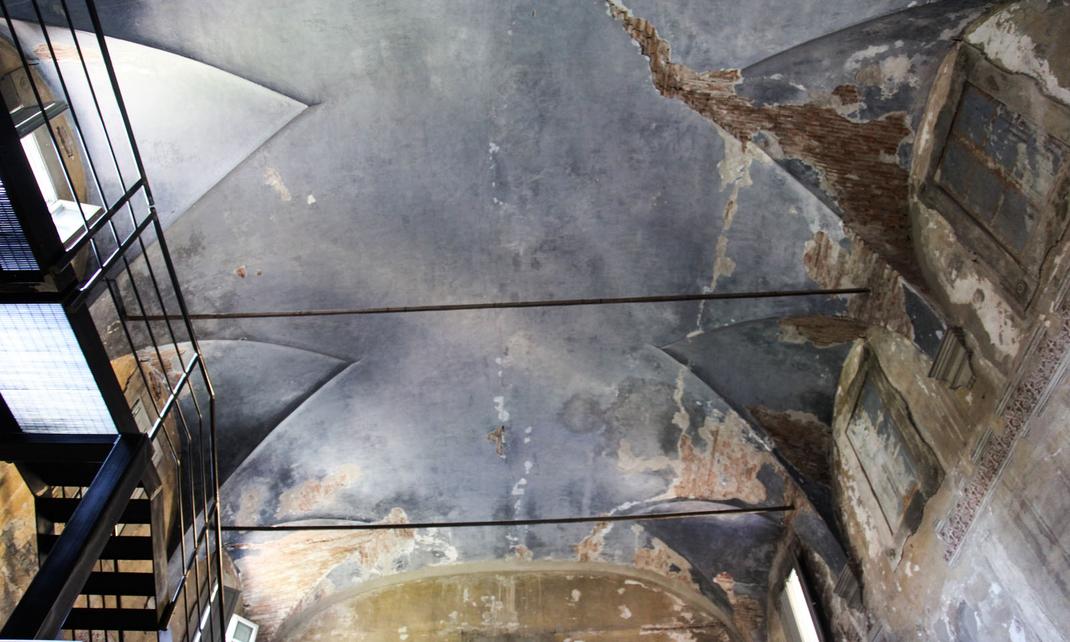
The original ceiling.
It is funny that the Italian photographer who is known throughout the world for his snapshots of crowded beaches lives in a home that is uncluttered and ethereal.
Image courtesy of: The Socialite Family, photograph courtesy of: Constance Gennari
Until the move, Vitali, his wife Annette Klein, and his son had been living nearby in a portion of a palazzo that he personally found too ornate. Turning the church and attached monastery into “home” was a complicated process. Luckily, Klein is an art historian and antique jewelry collector. She was instrumental in the redesign and decoration process.
Governmental regulation was something that Vitali had to consider given the church’s long and complex history. He says, “Everything we did, people from the state superintendents of archaeology and fine art had to watch. We couldn’t use machines- it was more like renovating with a scalpel.”
For the government, there was an added bonus… anything discovered on site was governmental property. For example, when intending to replace the concrete floor, the digging uncovered shards of 15th-century pottery. Long ago, those broken pieces had been used as fill; they resulted in twenty boxes of remnants.
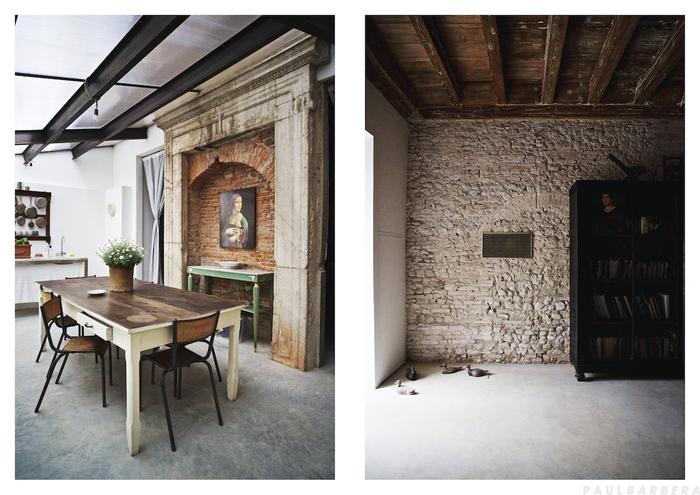
The home’s interior.
Vitali’s home is in a neighborhood that used to be “the place” for Lucca’s leather artisans. Now, this area is mostly residential with studio spaces for many of the town’s architects and designers. This is also close to the city’s police… Vitali likes to joke that he is not worried about security.
Image courtesy of: Where They Create
Even though Vitali was careful to keep the integrity of the church, he did have to replace the roof because the old one leaked so badly that plants began growing inside the building. In addition, because he had to replace the flooring, he put down a concrete floor with radiant heating.
Vitali preserved the Mussolini-era motto (translated into English), “Believe Obey Fight”. The photographer says that “I never thought I’d live with a fascist slogan, but it’s part of history.” He even preserved the streaks of white paint that people used over the slogan following the war. Vitali believes that history needs to be preserved and he loves layers of history. Seems as though Vitali found his home!
Vitali says that it was very difficult, in today’s technology-driven age, to not let anybody touch the walls. He says, “There’s almost no switches around. No plugs. It gives you some sort of freedom from the modern world.”
On one wall, those who constructed it wrote, “This wall has been built on the October 27, 1853.” Indeed, history IS everywhere!
